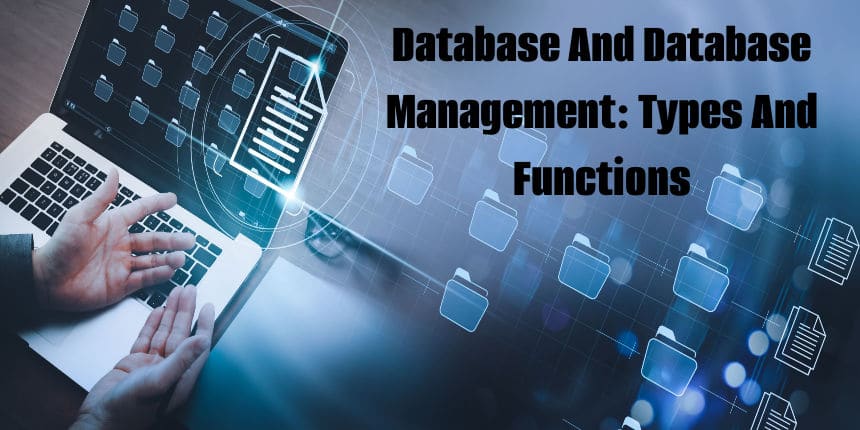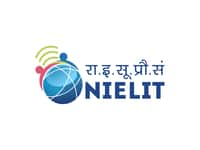UPES B.Sc Admissions 2025
Ranked #46 amongst Universities in India by NIRF | 1900+ Students Placed | 94% Placement | 633+ Recruiters
Imagine running a business where the information about products, production and customers is vague? That business will fail. So we need a database. From the analogue world of bookkeeping and ledgers, we have reached to database management systems powered by cloud computing. In this article we will learn about Database Management Systems, different database types, etc. in detail. And you will be able to master them by taking top database management certification courses. Along the way, we will also take a look into potential career choices.

Also Read: Free Database Management certification courses
Data refers to a collection of various units of informatioN. In the age of Information Technology, these could be Text, numbers, media, and any other type of information. In a nutshell, it is information that can be translated into a specific format to make it easier to move and handle.
Example: Name, age, weight, height, etc.
Also Read: Database Testing certification courses
A database is a logically organised collection of structured data maintained in a computer system. A database management system is usually in charge of keeping track of it (DBMS). Database systems are critical to your company because they keep track of data on product inventory, customer profiles, sales transactions, and marketing activities. There are different database types which we will get into shortly.
Also Read: Career as a Database Architect
Consider a library. It has a large collection of books from many genres: Horror, Romance, Comedy, Fantasy, etc. All of these books would be categorised and listed under these specific genres. This way it is easier for you to access any book.
Similarly database management systems also contain details about different things: clients, patients, products, services, raw materials, finances, etc. They will be organised under specific categories and once given the proper command, the user can easily find specific things.
Facts
Database Management systems have evolved significantly since their introduction in the early 1960s.
Navigational databases, such as the Network database and the Hierarchical database , were the first systems for storing and manipulating data. Despite their rigidity, these predecessors of database systems were quite successful.
Relational databases became increasingly popular in the early 1980s, followed by object-oriented databases afterwards.
NoSQL databases have recently emerged as a response to the rapid growth of the internet and the demand for faster processing of unstructured data.
Now there are self-driving and cloud-based databases, which are breaking new ground in terms of data collection, storage, management, and utilisation.
Now that we have got through database and database management systems, along with a bit of history and its functions, now let’s understand how we can create a database?
Also Read: 15 Courses on Database Administration to Pursue Right Now
With the ‘CREATE DATABASE’ statement, create/ develop a new database.
The Syntax is as follows:
CREATE DATABASE databasename;
E.g.:
CREATE DATABASE College
Thus the database of the name ‘College’ will be created.
And voila! You have your database.
Hardware
This is a collection of physical electronic devices, such as I/O devices and storage devices. It also acts as a conduit between computers and the outside world.
Software
This is a collection of programmes that control and administer the entire database management system. The software for the database administration system is also provided. Software also includes the following: network software for sharing data among users, database management system, and application programmes for accessing data.
Data
Data is collected, stored, processed, and accessed through the Database Management System. Both the real or operational data and the metadata are stored in the Database.
Procedure
These are the rules and instructions for using the database to create and run the database management system, as well as to guide the users who operate and manage it.
Database Access Language
It is used to enter and exit data from the database. Data from databases is required. To add or update or retrieve data, You can create a set of instructions in database access language and submit them to the database management system (DBMS), which then processes and creates the data and displays the results in a user-friendly style.
Also Read: 7 Types of Keys in DBMS - A Glossary of Database Terms
Now let us take a look at various database types available.
Relational Database
A relational database is one of the best database types that stores and makes data points connected to one another accessible. The relational database model, an intuitive and simple means of representing data in tables, is the foundation of relational databases.
Cloud Database
Created, distributed, and managed in a cloud system, the cloud database is useful for private, public, or hybrid purposes. MySQL, Oracle, IBM DB2, and Microsoft SQL Server are all common cloud systems and cloud service providers. MySQL, for example, is an open-source cloud platform. The table model is not used in non-relational databases, often known as NoSQL. Rather, they save all material as a single document, regardless of its structure.
NoSQL Database
Sometimes referred to as "not only SQL", NoSQL databases are one of the best database types to keep data in a different way than relational tables. The data model of NoSQL databases is used to classify them. The most popular types for which Non-tabular databases are utilised are document, graph, key-value, and wide-column.
Also Read: 20+ Courses on MySQL To Pursue Right Now
Graph Database
A single-purpose, specialised platform, graph database is used for constructing and manipulating graphs. Nodes, edges, and properties are all utilised in graphs to represent and keep data in a manner that relational databases are not capable of.
When you need to construct linkages between data and query these associations fast, graph databases are useful for use cases like recommendation engines, fraud detection and social networking.
Operational Database
An operational database management system is software that allows users to quickly define, alter, retrieve, and manage data. Operational database systems are one of the best database types aimed toward real-time, transactional processes, whereas traditional databases rely on batch processing.
Object-Oriented Database
An object-oriented database (OOD) is a database system that can handle complex data objects, such as those found in object-oriented programming languages. In the object-oriented database, everything is an object in object-oriented programming, and many objects are highly complicated, with various properties and methods.
Centralization Database
A centralised database (abbreviated CDB) is a database that is stored, managed, and accessed from a single place. In the centralised database, a central computer or database system, such as a desktop / mainframe computer / server CPU, or a , is usually the location.
Distributed Database
A distributed database is made up of two or more files that are stored in separate locations, either on the same network or on separate networks. Distributed databases are database types where data is stored in many physical places, and processing is dispersed over multiple database nodes.
Now that we have covered various database types, let us dive into Database Management System (DBMS) which are crucial for data handling storage, etc.
Also Read: 15+ Courses on Database Design To Opt For
It is a computerised data storage system. Users can execute a variety of actions on it, including data manipulation and database structure management. Database Management Systems (DBMSs) are classified based on their data structures or types.
A database almost always demands the usage of a Database Management System, which is a comprehensive database software application (DBMS). A database management system (DBMS) serves as a link between the end-users / softwares and the a database. Thus the users can access, modify, and manage data. Administrative duties such as performance monitoring, adjusting, and backup and recovery, Database oversight and control are all possible with a database management system.
Structured Query Language is a type of query language. SQL is a programming language for database interface. It is the standard language for relational database management systems, according to ANSI (American National Standards Institute).
Relational Software, Inc. (now Oracle) provided the first commercially available SQL implementation in the year 1979. SQL has established itself as the major RDBMS language.
Advantages
Data redundancy is reduced.
There are also fewer update mistakes and more uniformity.
Data integrity from application applications is easier.
Users have better data access thanks to the use of host and query languages.
Data security has also been enhanced.
Costs of storage, data entry, and retrieval are cut down.
Disadvantages
Databases are sophisticated software and hardware systems.
Cost: Significant upfront and continuous financial expenditures are required.
Security: Most major corporations require assurance that their database systems can securely retain critical employee and customer data.
Compatibility: A database management system (DBMS) may or may not be compatible with a company's operating needs.
Top Providers Offering Database Management courses and certifications
So there you have it. We have gone through database types, database management systems as well as their functions. Take some of the top database management certification courses to master this skill. All the best.
Now that we have explored in depth into Database Management Systems and different, you might also want to look into various credentials unrelated to it. Here we have meticulously compiled lists of top online certification courses, degree and diploma progams. Learn avout the course details (syllabus, course providers, duration, cost, financial aid, etc. )
Check out the top certificates in the top Technology Trends for even more fascinating prospects.
Yes, databases are created using SQL, which necessitates coding. Many of the courses on the list also provide SQL tutorials for beginners.
After mastering these Database types (cloud database, relational database, nosql database, graph database etc.) you will be sought after by top companies in IT data analytics, Finance, etc.
To create good database designs, one must have an aptitude for coding and flawless analytical skills.
Data scientists are highly skilled individuals with a diverse set of abilities. Completing database management system certification courses would develop their skill set.
Yes. Most database management courses and certifications are available online.
Database administration professionals can earn up to 10 LPA. You can expect to earn 5-6 LPA each year on average in the initial stage.
Yes. Some providers offer scholarship, loan facilities for their database management system courses.
Others:31 July,2025 - 02 August,2025
Counselling Date:31 July,2025 - 02 August,2025

Ranked amongst top 3% universities globally (QS Rankings)

Ranked amongst top 3% universities globally (QS Rankings)

NAAC A+ Grade | Among top 100 universities of India (NIRF 2024) | 40 crore+ scholarships distributed

Campuses in Ropar, Agartala, Aizawl, Ajmer, Aurangabad, Calicut, Imphal, Itanagar, Kohima, Gorakhpur, Patna & Srinagar
Ranked amongst top 3% universities globally (QS Rankings)
NAAC A+ Grade | Ranked No.1 Private University in India (QS World University Rankings 2025)